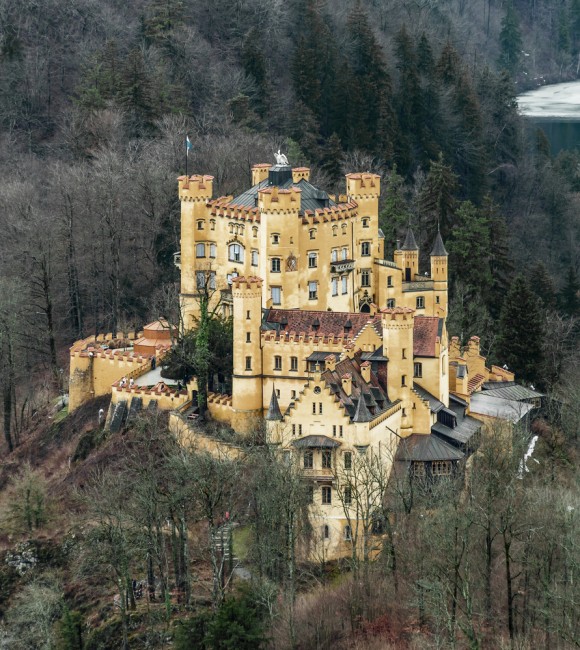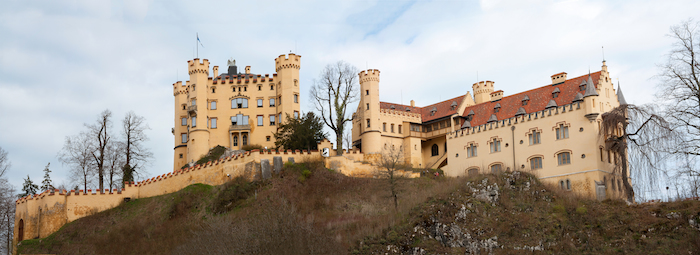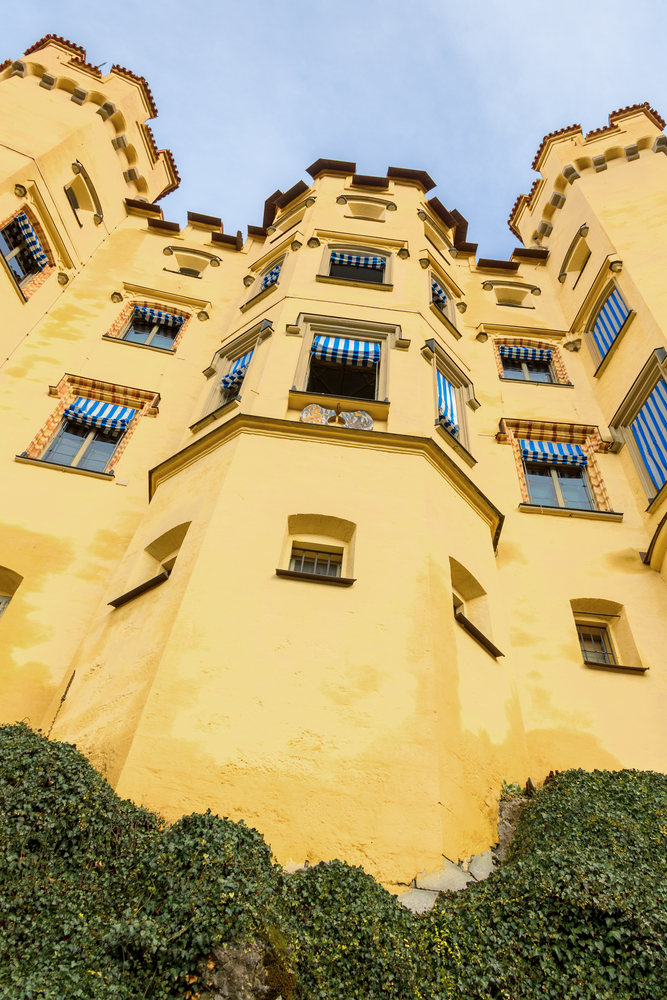Conveniently nestled in the foothills of the Alps, Hohenschwangau Castle is undoubtedly one of the most strategically placed and well-built fortresses of all time. Inside the castle, visitors get an impressive view of the neighboring nation of Austria. The castle also offers a spectacular vantage point of the rolling plains, evergreen fields and impressive forests encircling the castle.
Where to Start Your Visit to Hohenschwangau Castle
Nearby villages include Schwangau, a town situated just two kilometers from the fortress, Füssen (three kilometers away, which is a wonderful little village with great hotel options), Prontfen (20 kilometers away), and Garmisch-Partenkirchen (50 kilometers away).
Of course, Hohenschwangau Castle is also very closely situated to its slightly more famous cousin, Neuschwanstein Castle. Is it very possible to visit and tour both castles in the same day.
History of Hohenschwangau Castle
Hohenschwangau as a fortress may have existed since the 12th Century, despite the fact that traditional records usually don’t mention he fortress before the fifteenth century. The castle wasn’t immune to uncertainty of the middle ages. It experienced a huge number of sieges and invasions that remarkably left it (mostly) unaffected.
Nevertheless, the location of the fortress along the slopes of the mighty Alps made it somewhat indispensable over the years. Many kings decided to restore and continue to protect the fortress for strategic and military purposes. It was a tactical holding point for soldiers and served as a remarkable defensive position, being able to hold large numbers of invaders at bay, again thanks to its strategic geographic location on the Alps.
Hohenschwangau Castle was under the administration of Schwangau knights between the twelfth and sixteenth Centuries. It served as the center of government for the Schwangau Feudal System, where it oversaw peasants undertaking work around farms in its outlying flatlands, governed by the knights.
The latest version of the castle was built on the remains of the fortress during the 19th Century by King Maximillian II of Bavaria. It was in fact the childhood home of his son, King Ludwig II, who went on to build Neuschwanstein Castle and later became known as ‘Mad King Ludwig.’
During World War I and World War II, the castle suffered no damage. In 1923, the Bavarian Landtag recognised the right of the former royal family to reside in the castle. From 1933 to 1939, Crown Prince Rupprecht of Bavaria and his family used the castle as their summer residence, and it continues to be a favorite residence of his successors, currently his grandson Franz, Duke of Bavaria. In May 1941, Prince Adalbert of Bavaria was purged from the military under Hitler’s Prinzenerlass and withdrew to the family castle Hohenschwangau, where he lived for the rest of the war.
Visiting Hohenschwangau Castle
There are special tours available for visitors who would like to start to see the inside of this fantastic fortress. You can get tickets exclusively from the Hohenschwangau Castle website where you can also book tours for Neuschwanstein Castle.
Tickets are non-transferable and are only valid for the day indicated on the ticket. It is very important to be at the area given on the ticket at the specified time.
Getting There
By car, Hohenschwangau Castle is around 4.5 hours from Kaiserslautern, 4 hours from Wiesbaden, and 2.5 hours from Stuttgart. For public transportation options, please check with Deutsche Bahn.
Author profile: Peter Nowacki writes various travel articles. Cover photo by Vadim Petrakov









